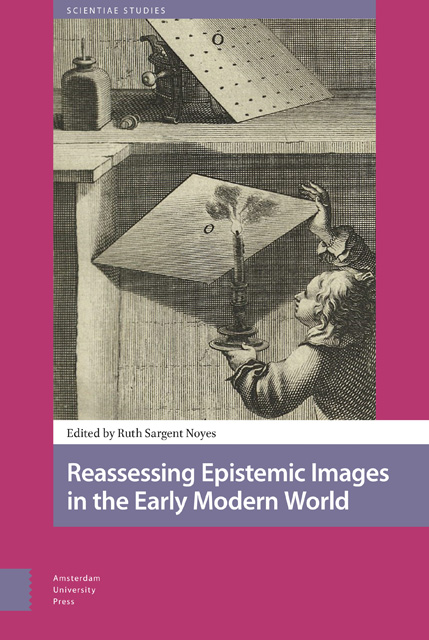Book contents
- Frontmatter
- Dedication
- Table of Contents
- 1 Prologue: For a Metaphorology of Engraving: From Epistemic Images to an Imaged Epistemology
- 2 Introduction: Pittura filosofica: Etching Galileo’s Sunspots and the Discursive Field of Early Modern Epistemic Images
- Part 1 Approaches to Print Matrices
- Part 2 Imprints as Instruments
- Part 3 Imprint, Knowledge, and Affect
- Bibliography
- Index
12 - Epilogue: Forgetting How to See
Published online by Cambridge University Press: 15 June 2023
- Frontmatter
- Dedication
- Table of Contents
- 1 Prologue: For a Metaphorology of Engraving: From Epistemic Images to an Imaged Epistemology
- 2 Introduction: Pittura filosofica: Etching Galileo’s Sunspots and the Discursive Field of Early Modern Epistemic Images
- Part 1 Approaches to Print Matrices
- Part 2 Imprints as Instruments
- Part 3 Imprint, Knowledge, and Affect
- Bibliography
- Index
Summary
Abstract
This chapter considers what happens to the “knowing imprint” when it moves outside of its original epistemological habitat. Wherever early modern Europeans traveled they brought printed images with them, to explain political and religious systems, to introduce customs, stories and artistic styles. Reverse engineering early modern prints’ epistemic opacity in colonial contexts may not be fully achievable, but as the discipline of art history embraces computer vision, certain methodological parallels emerge. Computers have to be taught to see, and digitization ventures like the Getty Research Institute’s PhotoTech project seek to automate metadata generation, to recognize important information and visual similarities. This chapter explores print’s ontological operations and epistemic limits, drawing on the operative challenges facing the ontology of computer vision.
Keywords: ontology, engraving, globalization, colonial, vision, computer Vision
Introduction
What does it mean to forget, learn, or relearn how to see? Reflecting on these questions, this essay emerges from the intersection of digital methodologies and my own art historical interest in the ontological operations of early modern print. These two apparently unrelated fields of inquiry come together as I consider the role of new image technologies and the concomitant processes of replication, circulation, and standardization, today and at the beginnings of globalization around 1600. Here, I briefly sketch some parallels between the infrastructural role of early modern print and twenty-first century attempts to automate and instrumentalize vision, both as efforts to deconstruct and reconstruct ways of seeing.
Indulgent Images, Imperial Infrastructures
Wherever Europeans landed in the sixteenth and seventeenth centuries, they brought printed images with them. Stacked and bundled, these woodcuts and engravings were used to introduce foreign rulers, customs, stories and artistic styles. Here is a king, an animal, a city you will never see. The Christian God looks like this; this is his mother (Figure 12.1). Accounting for the diverse roles of prints in the colonization of the Americas, Tom Cummins has described prints as the “indulgent medium par excellence,” as “simultaneously the most democratic and oppressive of all forms of images.” Cummins identifies the ubiquity of prints in the colonial world as symptomatic both of colonial power and its resistance.
- Type
- Chapter
- Information
- Reassessing Epistemic Images in the Early Modern World , pp. 265 - 286Publisher: Amsterdam University PressPrint publication year: 2022
- 1
- Cited by

